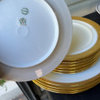Great Grandma Rachaels Broach
doris104
13 years ago
Related Stories

DECORATING GUIDESEdit Keepsakes With Confidence — What to Let Go and What to Keep
If mementos are weighing you down more than bringing you joy, here's how to lighten your load with no regrets
Full Story
TASTEMAKERSCatching Up With the Queen of Shabby Chic
Rachel Ashwell defined a style embraced by countless fans over the past 25 years. Find out what she’s turning her sights to now
Full Story
WINDOW TREATMENTSCurtain Speech
Learn the basic terms for parts and styles of draperies and curtains to get the look you want
Full Story
VINTAGE STYLERevel in Retro With Vintage and New Kitchen Appliances
Give your kitchen old-fashioned charm with refrigerators and stoves that recall yesteryear — even if they were made just yesterday
Full Story









lindac
doris104Original Author
Related Professionals
Roseville Furniture & Accessories · Culver City Furniture & Accessories · Acworth Painters · Dorchester Painters · Lisle Painters · Melrose Park Painters · Milpitas Painters · Palm City Painters · San Antonio Painters · San Pedro Painters · The Woodlands Painters · Nashville Furniture & Accessories · Rochester Furniture & Accessories · San Francisco Furniture & Accessories · Denver Professional Organizerslindac
Fori
lazy_gardens
calliope
Chloe1254
doris104Original Author
calliope
Chloe1254
patty_cakes
doris104Original Author
gillianma
chawkgrl253_yahoo_com
paige16